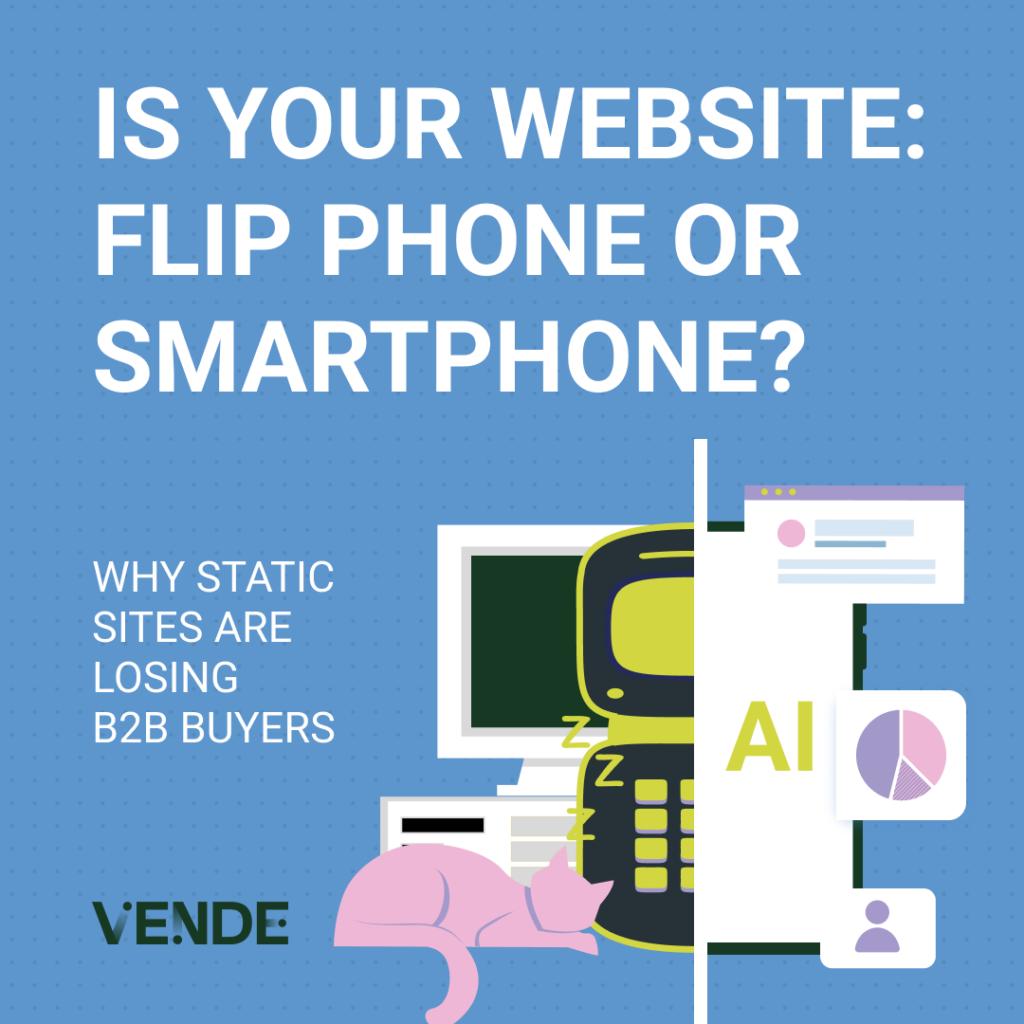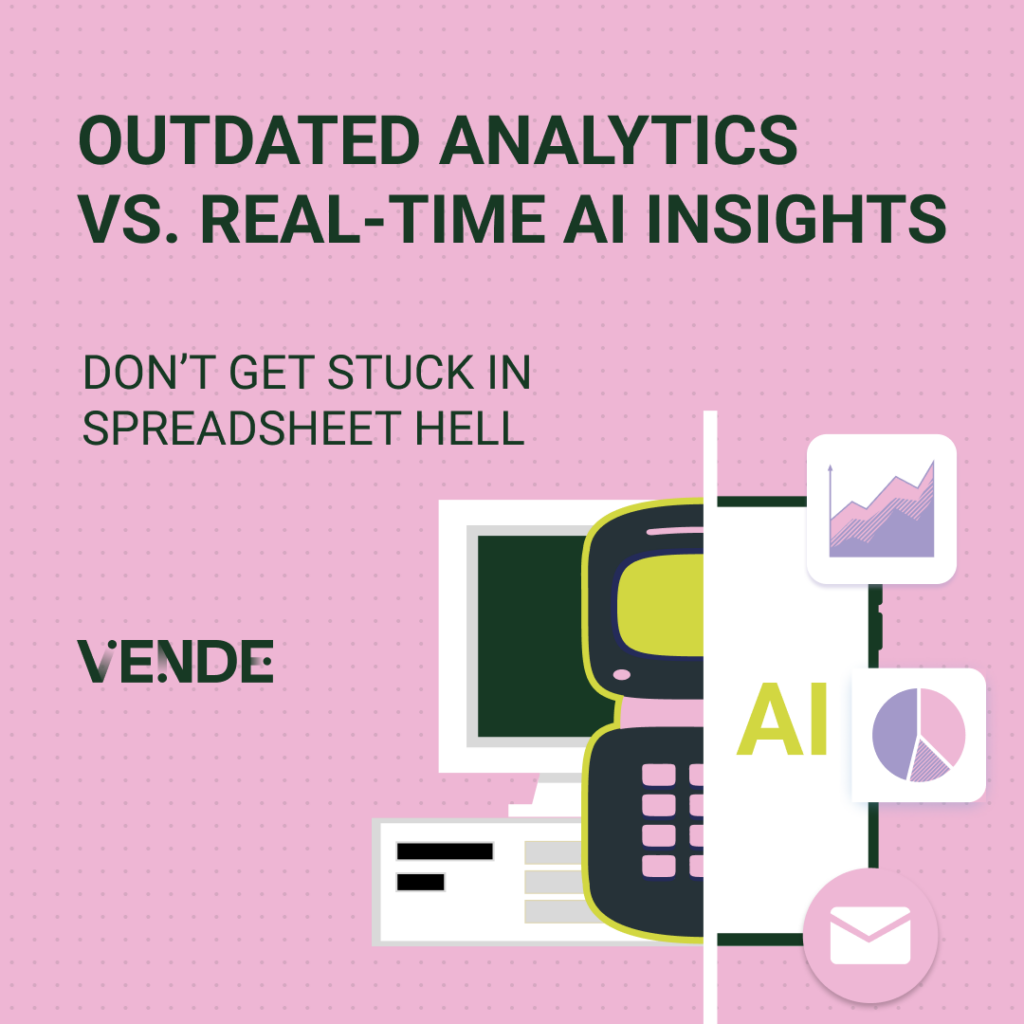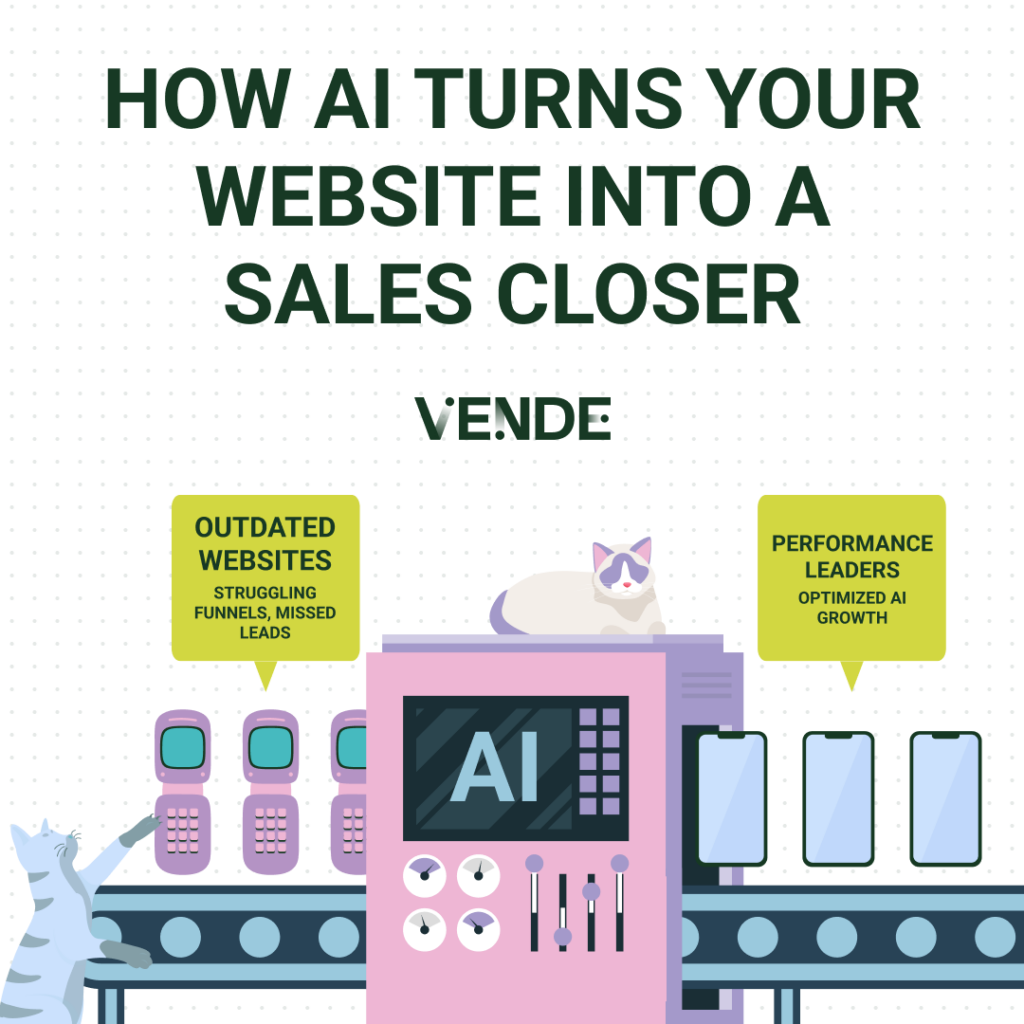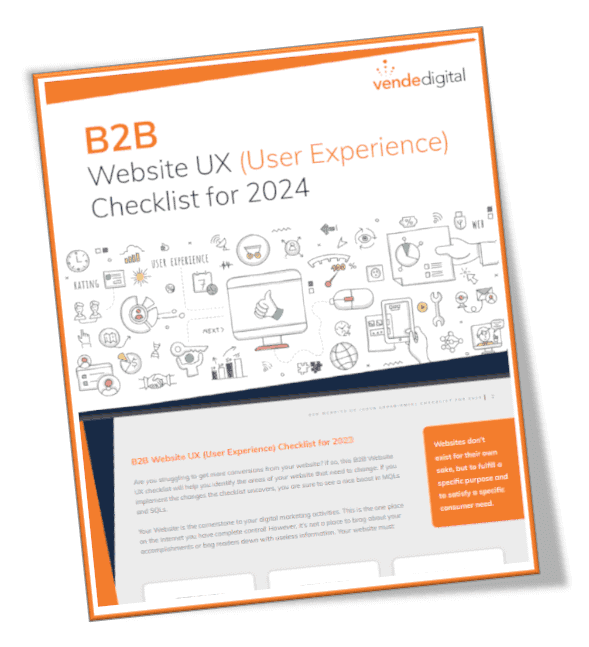When was the last time your website crushed it like your top-performing sales rep? Can’t remember? You’re not alone.
Most B2B websites feel like sad digital brochures stuck in a time warp. Static content, endless gated forms, confusing navigation, and maybe even a touch of jargon overload. But guess what? Buyers aren’t here for the 2015 vibes. We’re in 2025, and your “good enough” site isn’t just underwhelming; it’s tanking your pipeline.
Here’s the hard truth: B2B buyer behavior has evolved. They’re self-directed powerhouses. They’re 80% through their buying decision, before even saying “hello” to sales. The traditional website is outdated and powerless to woo them. If you want to convert today’s empowered buyers, your website must evolve into an AI-enhanced, always-on sales partner.
Here’s how.
Quick Breakdown: Why “Good Enough” is No Longer Enough
B2B buyers are acting more like savvy, no-nonsense consumers than corporate drones. They’re researching on their own terms, bypassing sales until they’re absolutely ready, and demanding digital experiences that don’t waste their time.
Here’s a reality check for static websites:
- Buyers expect Amazon-level experiences. Fast, intuitive, and laser-focused on their needs.
- They want guidance, not glorified spec sheets. No one has the time to dig for answers.
- Static pages leave them stranded. Confusion and frustration give way to abandonment.
The relief is AI-powered websites. These digital dynamos deliver dynamic, role-specific, and stage-specific support. A tool like Navu, for example, has shown that users are 4.7x more likely to convert when AI engages. That’s not marketing fluff. That’s money in the pipeline.
Why Are Traditional Websites Failing B2B Buyers?
Old-school B2B websites are like flip phones, built for a simpler time when buyers followed a straight, predictable funnel. But today, that funnel has morphed into a chaotic, squiggly graph that could pass as your cat’s paint-covered paw print on your Excel spreadsheet. It’s time to upgrade to the smartphone version of websites, designed for the messy, modern buyer’s journey.
Today’s B2B buyers want:
- Speedy answers. They’re not here for your five-paragraph mission statement.
- Personalization. Give them the content tailored to their industry, role, and decision-making stage.
- Frictionless paths. Oh, and no more forms that make them wonder if they’re filing their taxes early.
Static websites fail at all the above. They don’t adapt to buyer behavior. They force-run generic, one-size-fits-none journeys. And they rely on outdated conversion tactics that scream, “We don’t actually care about your experience.”
The result is high bounce rates, missed opportunities, frustrated sales teams, and prospects ghosting you for your competitors.

Buyer Behavior Bootcamp: Today’s Journey Is Nonlinear
Remember when buyers would see an ad, visit your homepage, download a white paper, hop on a sales call, and suddenly sign a deal? Yeah, good times. Now, buyers zig-zag as though they’re training for parkour competitions.
Here’s what you’re up against:
- Anonymous browsing: Buyers are researching you before you even know they exist. Better impress them.
- Channel-hopping galore: LinkedIn one minute, your blog the next, and a YouTube review before lunch.
- On their terms: Buyers move at their pace, not yours, and expect zero obstacles.
Buyers will abandon ship faster than a cat near water if your website doesn’t cater to this organic, self-directed decision-making.
What Exactly Is an AI-Powered Website?
An AI-powered website isn’t a flip phone struggling to keep up. It’s the smartphone of digital experiences, delivering what prospects need, exactly when they need it.
Here’s the breakdown:
- Conversational AI chat: Instant answers without the dreaded “submit a form and wait an eternity.”
- Role-based content delivery: A CMO gets insights. A Director of IT gets feature specs. Everyone feels seen.
- Behavior-driven recommendations: The site learns and adapts based on how users interact.
It’s as if your best sales rep cloned themselves, became a raging insomniac, and decided to work 24/7. Tools like Navu enable AI functionalities, transforming passive websites into proactive lead magnets.
And the results? More engagement, better leads, and enough actionable buyer data to make your sales team weep tears of joy.
AI-Powered Websites in Action
An AI-powered website isn’t just a buzzword; it’s a lean machine designed for results. Here’s how smart sites are structured to perform like rock stars:
- Dynamic homepage: Tailor content blocks like “Popular Downloads for Marketers” or “Hot Picks for Engineers.”
- AI-enabled product pages: Smart sidebars answer questions in real time. (“What’s included in the Enterprise package?” Just ask.)
- Conversational CTAs: Skip the “Contact Us” purgatory and use AI chat-based options instead.
- Analytics integration: Visitor behavior folds into your marketing and sales strategies. AI doesn’t just interact; it informs the next move.
This marriage of functionality and intelligence boosts conversions and creates top-notch user experiences that buyers swoon over.

How to Transform Your Website Into an AI-Powered Buyer Magnet
Feeling the pressure to level up? We’ve got you covered with this simple roadmap to kickstart your AI-powered revolution:
1. Audit for Intent Gaps
Start with your analytics. (Don’t worry, Google Analytics won’t bite.) Identify high-traffic pages with low conversions and determine why visitors are fleeing the scene.
2. Understand Your Buyers’ Journey
Dive into your audience’s roles and what they’re looking for at each stage. A CMO might want decision-making insights, while IT pros care more about integration specs.
3. Lay Down the AI Layer
Start small. Pick high-impact pages like product, pricing, or case studies. A tool like Navu or Drift can offer your visitors an intuitive, real-time engagement layer.
4. Train That AI
Feed your AI companion with the very best content you’ve got. Case studies, blogs, FAQs, and helpful videos. A well-fed AI performs better, just like humans (and pets).
5. Test, Optimize, Repeat
Track engagement metrics and user behavior. Is your AI delivering answers buyers need? Are prospects finally moving into your pipeline? Tweak and optimize as you go, repeating successful formulas while discarding dead-end tactics.
TL;DR Takeaways from the Smart Website Revolution
🔹 Strategic Recap
- Static websites are not neutral; they’re actually hurting business outcomes.
- AI-enabled websites meet B2B buyers’ expectations for instant, personalized, and self-directed experiences.
- You don’t need an overhaul. You need intelligent enhancements to your existing foundation.
🔹 Quick Tactical Wins
- Audit for bottlenecks.
- Deploy conversational AI on high-value pages.
- Personalize content based on role and industry.
- Train AI tools with your sharpest resources.
- Align website insights with your sales teams for smarter lead handling.
Your Website Is Your Best Closer
An AI-powered website doesn’t just “keep up” with the times; it stays two steps ahead of what today’s B2B buyers demand. Buyers are smart, independent thinkers who crave clarity and guidance, not forms and fluff.
Want to empower buyers, grow your pipeline, and stop leaving money on the table? Upgrade from a flip phone website to the smartphone version—because in 2025, “meh” just won’t cut it.

